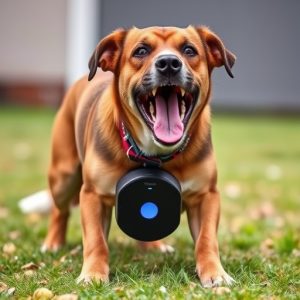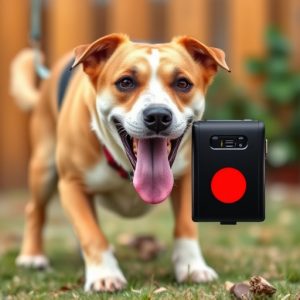Safe Dog Repellents: Comparing Stationary vs. Mobile Ultrasonic Technology
The Stationary Vs Mobile Dog Repellent Comparison highlights the contrast between fixed, reliable st…….
The Stationary Vs Mobile Dog Repellent Comparison highlights the contrast between fixed, reliable stationary repellents ideal for gardens and homes, versus portable mobile options offering flexibility and immediate use for outdoor activities. Stationary devices provide consistent protection over large spaces but lack adjustability, while mobiles are simple and convenient but require more active management. The choice depends on individual needs, balancing long-term protection against freedom of movement, with each type serving unique purposes in dog control and management strategies.
“Unleashing a new era in pet care, safe dog repellent ultrasonic technology offers a non-invasive solution for managing canine behavior. This innovative approach leverages high-frequency sound waves to deter dogs without harm, making it a popular choice among responsible pet owners.
This article delves into the intricacies of ultrasonic repellents, exploring a stationary vs. mobile dog repellent comparison. We analyze their pros and cons, offering insights on how to choose the ideal solution for effective and safe canine control.”
- Understanding Ultrasonic Technology for Dog Repellents
- Stationary Dog Repellents: Pros, Cons, and Applications
- Mobile Dog Repellents: Portability, Effectiveness, and User Experience Comparison
Understanding Ultrasonic Technology for Dog Repellents
Ultrasonic technology has emerged as a popular and innovative approach to dog repellents, offering an alternative to traditional methods. This technology utilizes high-frequency sound waves that are inaudible to humans but can be detected by dogs. When activated, these devices emit a range of ultrasonic tones that are believed to discourage dogs from approaching or remaining in a specific area.
In the stationary dog repellent market, ultrasonic devices are often designed as fixed units placed outdoors, such as on patios or decks. These units emit continuous or intermittent ultrasonic signals, creating a barrier that discourages dogs from entering. On the other hand, mobile repellents take a different approach by using portable devices that can be carried or attached to clothing or bags, allowing for more flexibility in use. This comparison highlights the diverse options available, catering to various preferences and needs when it comes to keeping dogs at bay.
Stationary Dog Repellents: Pros, Cons, and Applications
Stationary dog repellent devices, often left in fixed locations, offer a consistent and reliable solution for keeping dogs away from specific areas. One of their main advantages is their convenience; once installed, they require minimal maintenance. They are ideal for use in gardens, patios, or even inside homes to deter dogs from entering certain rooms or areas without the need for constant monitoring. Additionally, these devices can be a game-changer for folks dealing with persistent neighborhood dogs that keep straying onto their property.
However, there are drawbacks to consider. Stationary repellents may not be as effective over large spaces due to potential signal interference from structures or trees. They also might not be as easily adjustable, meaning you can’t simply move them to a new location if the dog’s behavior changes. In contrast, mobile options provide greater flexibility and can adapt to different environments, making them suitable for outdoor events or temporary situations. A stationary vs. mobile dog repellent comparison reveals that the choice depends on individual needs and preferences, with each having its strengths and limitations in the broader context of dog control and management.
Mobile Dog Repellents: Portability, Effectiveness, and User Experience Comparison
Mobile dog repellents offer a unique advantage in their portability, making them ideal for those seeking flexibility and convenience. Unlike stationary repellents that are confined to specific areas, mobile options can be easily carried and used almost anywhere. This feature is particularly beneficial for outdoor activities like hiking or camping where you might want protection against dogs without the constraints of a fixed location.
When it comes to effectiveness, both types have their strengths. Stationary repellents often provide longer-lasting results due to consistent placement and exposure. In contrast, mobile repellents excel in terms of adaptability and immediate use. User experience also varies; stationary models might require setup and maintenance, while mobiles offer simplicity and ease of use. Ultimately, the choice between them depends on individual needs, whether prioritizing convenience or long-term protection.
In exploring safe dog repellent ultrasonic technology, we’ve seen that both stationary and mobile options offer unique advantages. Stationary repellents are ideal for defining and protecting specific areas, while their lack of portability limits their usability in dynamic settings. Conversely, mobile devices excel in versatility, allowing users to repel dogs on the go or in various environments. When choosing between stationary and mobile dog repellent ultrasonic technology, consider your specific needs – whether it’s protecting a fixed space or addressing a more flexible challenge. A comprehensive understanding of these differences enables pet owners and managers to select the most effective solution for keeping dogs away.


